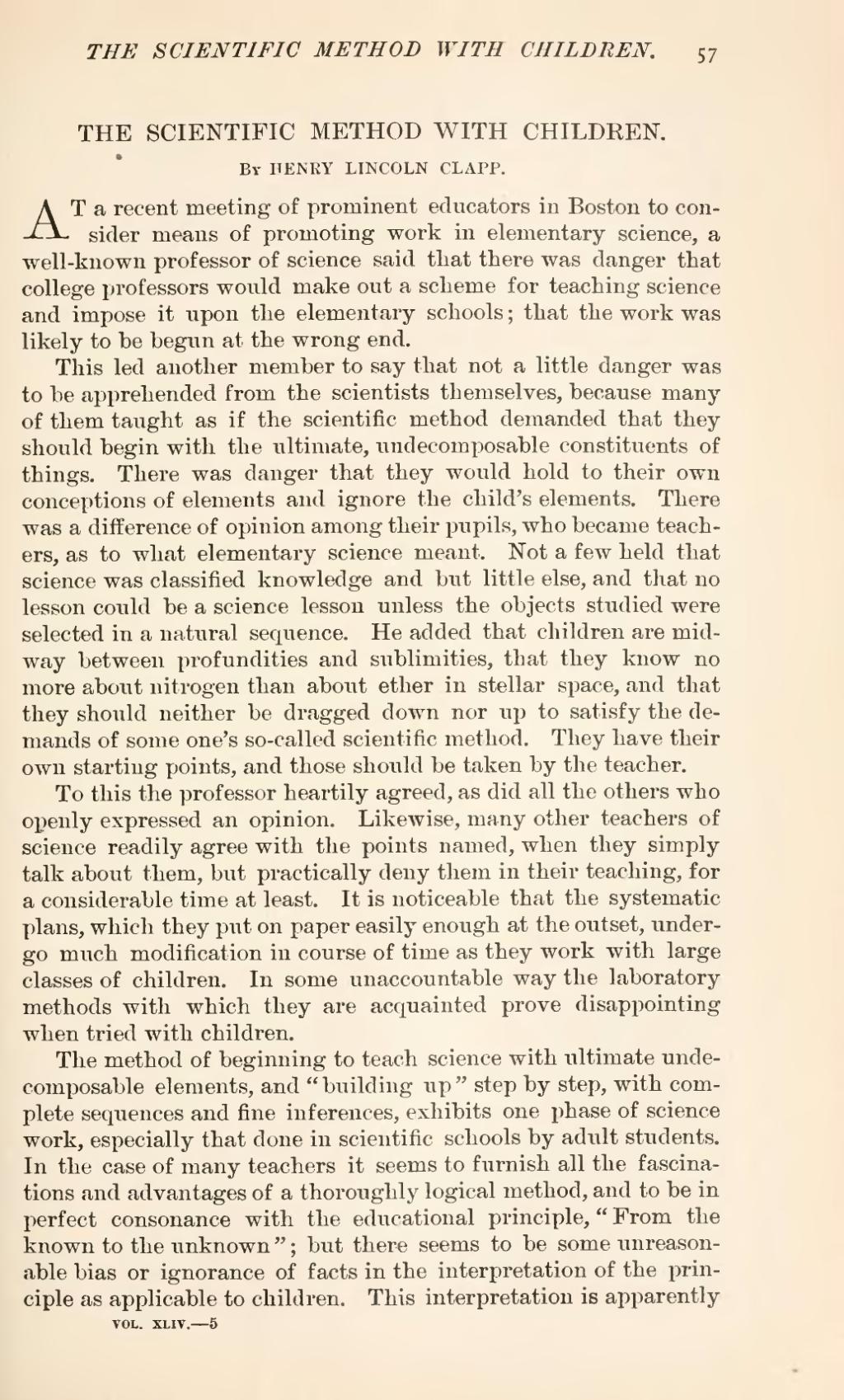| THE SCIENTIFIC METHOD WITH CHILDREN. |
By HENRY LINCOLN CLAPP.
AT a recent meeting of prominent educators in Boston to consider means of promoting work in elementary science, a well-known professor of science said that there was danger that college professors would make out a scheme for teaching science and impose it upon the elementary schools; that the work was likely to be begun at the wrong end.
This led another member to say that not a little danger was to be apprehended from the scientists themselves, because many of them taught as if the scientific method demanded that they should begin with the ultimate, undecomposable constituents of things. There was danger that they would hold to their own conceptions of elements and ignore the child's elements. There was a difference of opinion among their pupils, who became teachers, as to what elementary science meant. Not a few held that science was classified knowledge and but little else, and that no lesson could be a science lesson unless the objects studied were selected in a natural sequence. He added that children are midway between profundities and sublimities, that they know no more about nitrogen than about ether in stellar space, and that they should neither be dragged down nor up to satisfy the demands of some one's so-called scientific method. They have their own starting points, and those should be taken by the teacher.
To this the professor heartily agreed, as did all the others who openly expressed an opinion. Likewise, many other teachers of science readily agree with the points named, when they simply talk about them, but practically deny them in their teaching, for a considerable time at least. It is noticeable that the systematic plans, which they put on paper easily enough at the outset, undergo much modification in course of time as they work with large classes of children. In some unaccountable way the laboratory methods with which they are acquainted prove disappointing when tried with children.
The method of beginning to teach science with ultimate undecomposable elements, and "building up" step by step, with complete sequences and fine inferences, exhibits one phase of science work, especially that done in scientific schools by adult students. In the case of many teachers it seems to furnish all the fascinations and advantages of a thoroughly logical method, and to be in perfect consonance with the educational principle, "From the known to the unknown"; but there seems to be some unreasonable bias or ignorance of facts in the interpretation of the principle as applicable to children. This interpretation is apparently
